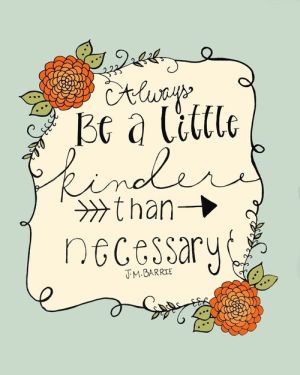 What does your email communication method say about your business? Are you short and to the point? Warm and friendly? Informal? Too busy to reply? Email is part of all our daily lives, especially as business owners. It’s our primary system of communication with clients and colleagues, so it’s important we’re aware of what we’re communicating. In working with several of my recent wedding PR consulting clients, I’ve noticed that electronic communication is something that can impact a first impression and change a relationship. I read up a bit on the email do’s and don’ts by etiquette gurus Emily and Peggy Post and I couldn’t agree more.
What does your email communication method say about your business? Are you short and to the point? Warm and friendly? Informal? Too busy to reply? Email is part of all our daily lives, especially as business owners. It’s our primary system of communication with clients and colleagues, so it’s important we’re aware of what we’re communicating. In working with several of my recent wedding PR consulting clients, I’ve noticed that electronic communication is something that can impact a first impression and change a relationship. I read up a bit on the email do’s and don’ts by etiquette gurus Emily and Peggy Post and I couldn’t agree more.
With email, it’s important to be warm and personable, especially in our industry! Couples want to know their wedding vendors are excited to be working on one of their most special days in their lives! Here are 6 quick tips on how to achieve the balance of personable, yet professional emails –
- Add in the occasional exclamation mark or smiley face when appropriate. No, not every sentence needs to end with an exclamation mark, but this punctuation communicates what your reader can’t see – that you’re cheerful and in a good mood.
- Don’t start an email with “Hi-” and end it with “Thanks.” In your email greetings ALWAYS use the person’s name, and if you’re ending with “Thanks” either use an exclamation mark or a comma, the period sounds cold and detached.
- Infuse a bit of personality. We’ve all been there – you chat with someone on the phone and get along great! You decide to stay in touch via email and then find their email personality is seriously lacking. That creates a potentially damaging disconnect. You don’t have to get straight to the point in all emails. Since it’s the primary form of communication, it needs to give the reader a sense of who you are.
- Timeliness of emails is extremely important! Etiquette states a typical response time should be 24 hours. Now obviously no one gets this right all the time, but it’s a goal we should all strive to have! Even if it’s a “I’m really slammed right now, but I got your email and will get back to you as soon as I have a few minutes to spare!” – your recipient will be satisfied that their email has been received and a response is on it’s way. This is a much better alternative to no response at all.
- Auto replies – as someone who emails a lot, I find myself receiving more and more auto replies. Let’s be clear, there is a time and place for an auto reply – when you’re traveling or away from work. There is no need to have an auto reply that says you will get back to someone in 24 hours and then you write them back and they reply to get another auto reply. The ironic part is those that say they will respond in that time frame never do.
- Confidentiality – emails should never be a form of confidential communication. Even if you have the disclaimer saying the email cannot be shared, you should never put something into email that you’re not okay with other people reading. It can be accidentally sent to the wrong person, saved or forwarded on.
There’s no 100% right way to email, we all have different personalities and communication styles… but we need to be aware of how we’re coming across in our emails and what we’re sending out into cyberspace. Be warm and kind, timely, cautious of what information you send out, when you send it, and how you send it.


Wonderful and unique information. Before sending another e-mail everyone should read this information..
Lots of very sensible suggestions here!
And here’s one more: take a minute to use Spell Check…or at least proofread your email before it goes out. We all make typing errors/omissions, etc. But incorrect spelling can leave a negative impression of the sender, and you always want to put your best self forward!
An email can change everything for better or for worse – my thoughts on @inspiredbythis blog http://ow.ly/jgB3t
RT An email can change everything for better or for worse – my thoughts on @inspiredbythis blog http://ow.ly/jgB3t
@weddingPR @inspiredbythis So true! I just got a “for better” email. It has made my whole day brighter. Totally contagious!
@weddingPR @inspiredbythis
A terrific and timely post. And also, as with any public #writing, take the time to check your spelling too!
RT @weddingpr An email can change everything for better or for worse – my thoughts on @inspiredbythis blog http://ow.ly/jgB3t
I would add “know your audience” to this. @inspiredbythis An email can change everything for better or for worse http://ow.ly/jgB3t
Grumpy and cold? Or warm and friendly? What does your email style say about you? http://ow.ly/jgBzK
RT Grumpy and cold? Or warm and friendly? What does your email style say about you? http://ow.ly/jgBzK
love……smiles
do you leave your auto reply on too long? or begin your emails with hi – then this post is for you! http://ow.ly/jgBCB
Hear hear!!
Email faux paus from @weddingPR… are you guilty? http://www.inspiredbythis.com/2013/03/what-is-your-email-really-saying/ …
I completely agree.